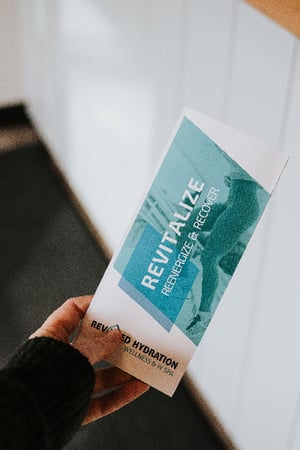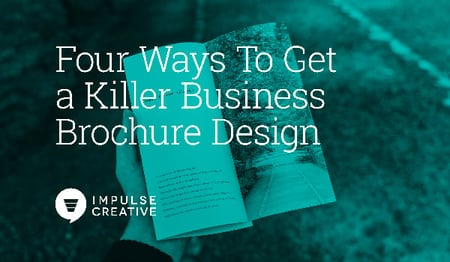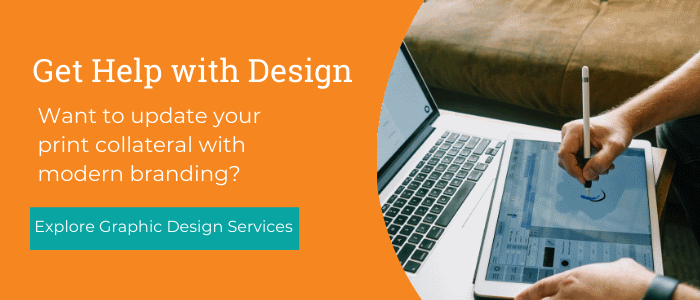Today’s marketing landscape is vast. With numerous avenues for conveying a message to potential customers, brands have more tools at their disposal than ever before. And it would seem that many of them are free or cost a fraction of what a large advertising campaign of yesteryear would have cost.
Tools like social media or interactive website chatbots take little to no time or budget to set up and maintain, and have proven successful in being everything from a sales tool to channel for delighting newly minted brand advocates. Despite an ever expanding playbook of digital marketing strategies, there is one piece of marketing collateral which this author has yet to deem dead.
Enter the brochure. Yes, that 8.5x11 inch piece of paper that’s folded three ways from Sunday gathering dust in your desk drawer; it’s still relevant. Heck, even Amazon has put out a print catalog as recently as 2019. Print is not dead, and when done right, print can actually enhance your business’ value proposition.

According to a study by Canada Post, a piece of direct mail required 21% less cognitive effort to process than digital media and elicited higher brand recognition. The same study found that print was visually processed much more easily than it’s digital counterpart.
Aside from the neurological edge, I would argue print goes where digital can’t: into your customers' hands. There is a tactile, visceral reaction one has when interacting with something in the physical space. Which leads me to the first item on my list of four ways you can be sure to get a killer business brochure design.
Paper Choice Can Make a Major Difference
Again I turn to research to demonstrate the importance of “feel” in your brochure design. Due to a direct link between our emotions and sensory stimulation, “what we feel can be heavily influenced by what our senses are taking.”
By taking into consideration the weight and texture of the paper we print our brochure on, we can elevate a rather mundane experience to a higher quality one. This extra bit of stimuli for the person receiving the brochure can be the difference between being remembered or being relegated to the junk pile. It’s because of this desire for a tactile experience, that we’ve seen a modern revival of the centuries-old art of letterpress.

Think About Your Content
Prior to thinking about your paper choice however, you should have a good content strategy in place. What are you going to say in your brochure? Who is the brochure even for?
Hopefully before you’ve even made it to designing a brochure for your business, you’ve established your buyer personas. Having a pretty good idea of their wants and challenges can help you create and customize content that meets them where they are in the buyer’s journey. With a brochure that’s typically somewhere in the discovery phase. (You’re not going to give a brochure to somebody near the bottom of the funnel for instance.)
The content of your brochure should be succinct, to the point, and give a high level overview of you and your business.
Formatting content is important, too. Nobody wants - or has the time - to read a novel while walking the trade show floor. Here’s a quick punch list of ways you can be sure your brochure is designed to be easy to use:
- Use bulleted lists (like this one). They make skimming content easier.
- Vary your font sizes. Make it easy to distinguish between paragraphs and headlines.
- Mind your margins. If I can offer one tip to non-designers, it’s to use margins. Just imagine an invisible frame is blocking your content from running from edge to edge.
Graphics and Images

Closely tied to your content strategy, is your use of photography and graphics like diagrams or informational graphs. Interspersed among that noteworthy copy should be equally attractive graphics. Using pictures makes for a more memorable experience and allows the reader to connect more closely with the content.
If the brochure for your business is talking about products, show some pictures of them! If your business sells something a little less tangible, think about how images can be used throughout the design to help support the copy.
Using images as backgrounds for sections within the brochure helps keep things visually interesting and can be useful in breaking up individual thoughts. Aside from photos however, people love numbers. And what better way to show numbers than with a graph or chart. If you use graphs and charts elsewhere in your business - think slide decks, or annual reports - see how they might be re-purposed for a format like a brochure.
Impart Calls To Action (CTAs)
What's a piece of marketing content without clear next steps? 🤷 Like that email with a button to “Learn More," or that door hanger with the words “Free Estimate” plastered across the front, your brochure needs to provide the reader with a call to action. This could be as simple as a phone number, website URL, or even an email address. You could even be so bold to include all three! The trick is to keep it simple.
In the case of a hyperlink, it should be short enough that when somebody goes to type it in the browser, they don’t have to keep looking back for each character in the URL. Using a service to shorten your long URL can help mitigate any chance of it being mistyped. What's more is services like Bit.ly and Hootsuite can also provide a bit of analytics. Using a unique URL specially created for your brochures will allow you to track leads coming from that source.
Another alternative is to use a QR code. The jury was once out on QR codes as the technology to support them hadn’t caught up to their proliferation. Nowadays the “once dreaded” QR code has made a comeback with many smartphones recognizing and processing their data from within the phone’s native camera app.
Whatever the route you choose, make sure your brochure includes some way in which the user can learn more about who you are and what your company can do for them.
Brochures Aren’t Dead, They’re Just Badly Designed
As I said in the outset, the myriad digital tools we have at our disposal would suggest doing anything in print is a waste of marketing budget. On the contrary, I believe print can be a welcomed accompaniment to digital media. When designed correctly so that they are easy to use, nice to look at, and provide the user enough benefit including clear next steps, brochures should be part of library of marketing collateral.





